John Cage’s revolutionary idea: Dance (or any art) is not about something, it is something.
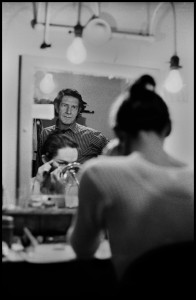
Cage watching Carolyn Brown in her dressing room at BAM, 1970
He lived this philosophy rather than preached it. His m.o. was curiosity, joy, and hard work, and it’s now been captured in John Cage Was, a big new book of photos taken by James Klosty between 1967 and ’72. Those were the years Klosty trailed the Merce Cunningham Dance Company, whose members included Carolyn Brown, Mel Wong, Sandra Neels (who has reconstructed Cunningham’s work), and Douglas Dunn (click here for his riddle-like tribute to Merce). Accompanying these masterful yet spontaneous photographs are quotes from dancers, composers, and visual artists, all incorporating the words “John Cage was.”
Cage was the architect of the ideas that made Merce Cunningham a renegade: the idea of creating music and dance separately but performing them simultaneously; the idea that there is no silence—there is always sound inside us or around us—and no stillness; and the idea of chance as an alternative to personal taste when composing music or dance.
He was also Cunningham’s musical advisor, driver of the VW tour bus, and the father figure who made touring fun for the dancers. His hobbies—playing chess and hunting for mushrooms—were legendary.
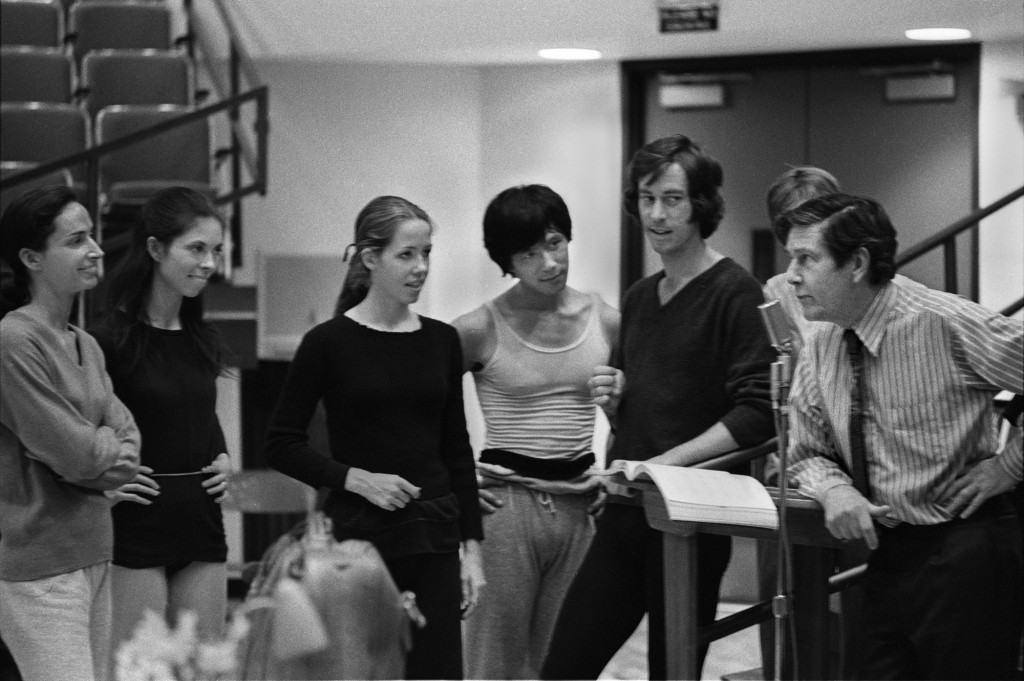
Cage on right, dancers, from left are, Carolyn Brown, Sandra Neels, Susana Hayman-Chaffey, Mel Wong, Chase Robinson, 1971
Many well-known people have colorful ways to describe Cage in this book. Baryshnikov calls him a “wicked genius.” Twyla Tharp calls him a “gentle anarchist.” Robert Wilson contributes a visual poem about his “renaissance mind.” Carolyn Brown (whose own book on Cage and Cunningham is passionately complex ) says Cage was “the heart and soul of the Cunningham Dance Company, making the experience of dancing with Merce an ever-surprising, vital, life-changing voyage.” The composer John Luther Adams writes, “Cage’s music is all about…the experience of listening.” You will find other quotes by Yvonne Rainer, Mark Morris, Stephen Sondheim, Gavin Bryars, and Yoko Ono.
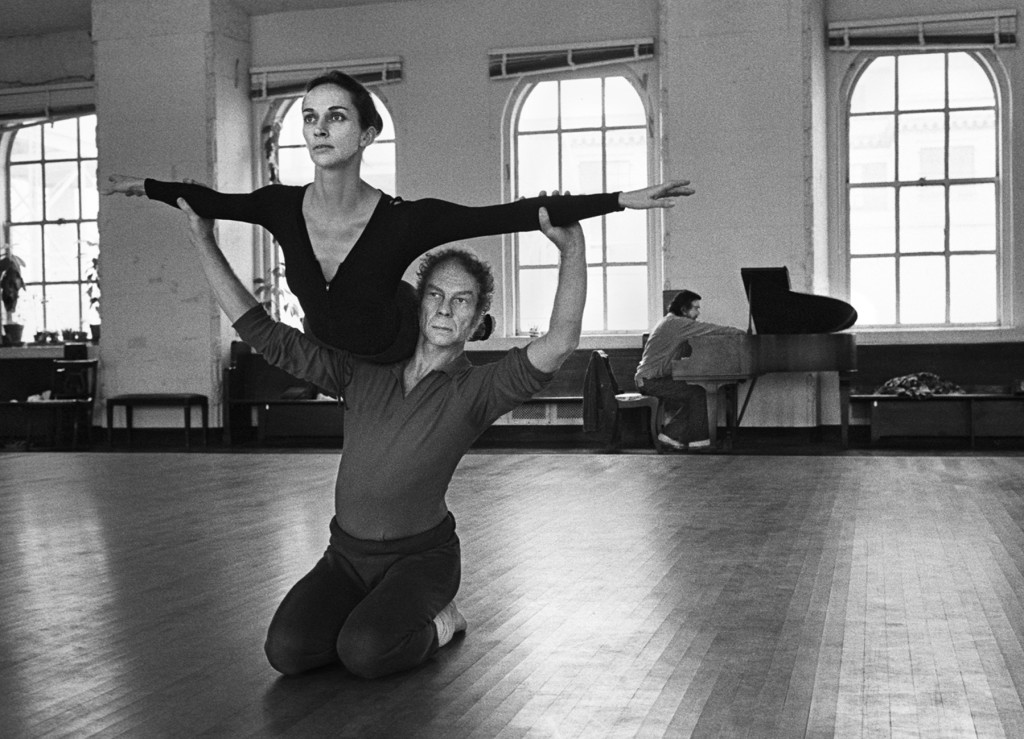
Merce and Carolyn Brown rehearsing Suite in Westbeth Studio with Cage at the piano, 1972
Klosty’s photos reveal Cage to be an impish, spontaneous person. (I remember when he “played” the cacti at Danspace in 1977, with utter glee at the sound of each pluck of the prickly plant.) He was always up for a photo op, unlike Cunningham who, it may be apparent in these pages, was less eager to cooperate with the camera.
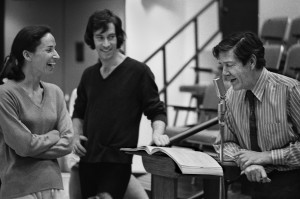
Cage with Carolyn Brown and Chase Robinson, 1971
As Klosty writes in his introduction, he hopes that readers will find here “glimpses into an always searching, unfailingly playful, uniquely beautiful spirit.” And those glimpses abound in these pages. And if you want to find out why Ain Gordon, son of David and Valda, at the age of 5 or 6, called John Cage his best friend, well, buy the book.
I love the clarity of Cage’s idea that art or dance is something in itself rather than in the service to something else. And yet I still hear people struggling to define what a dance is “about,” assuming they’ll find a theme or “meaning” if they dig under a pile of form or pattern. Yes, sometimes there is a theme that can be identified, but other times there may be a focus, not necessarily a theme.
I think Cage liberated us from certain stale expectations and conventions. He accomplished that with his gusto for life as much as with his groundbreaking ideas. Thank you, James Klosty and Wesleyan University Press (which has published seven of Cage’s books, starting in 1961), for reminding us of his presence with this profusion of beautiful, at times poetic images. Click here to order the book.
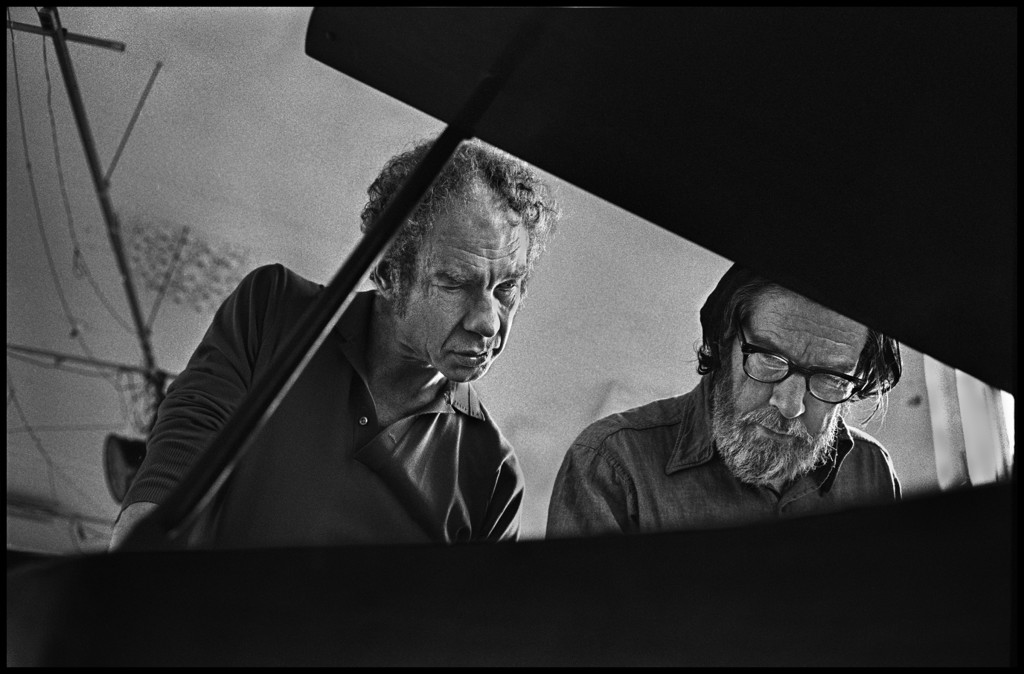
Merce and John at Westbeth, possibly looking into the makings of Cage’s “prepared piano,” 1972. All photos by James Klosty
Featured Uncategorized 2
Thanks Wendy. The timing is perfect. My Berkshire Pulse choreography students are about to show their solo works to an audience of parents, peers, and teachers for feedback…ala Bennington showings. Then they will create an event using individual & shared material to various previously unheard sound scores. I plan to read to them from this commentary before the showing… Best, Laurie
can’t wait to see the book. story…in 1959ish the cunningham company came to carbondale illinois. we had a party for them at my parent’s house. i was thrilled of course. john was so relaxed and put all our nervous guests at ease. ps…that was when i asked judy dunn where i should go to college. bennington. am practicing being e.e. cummings. can’t use the shift.